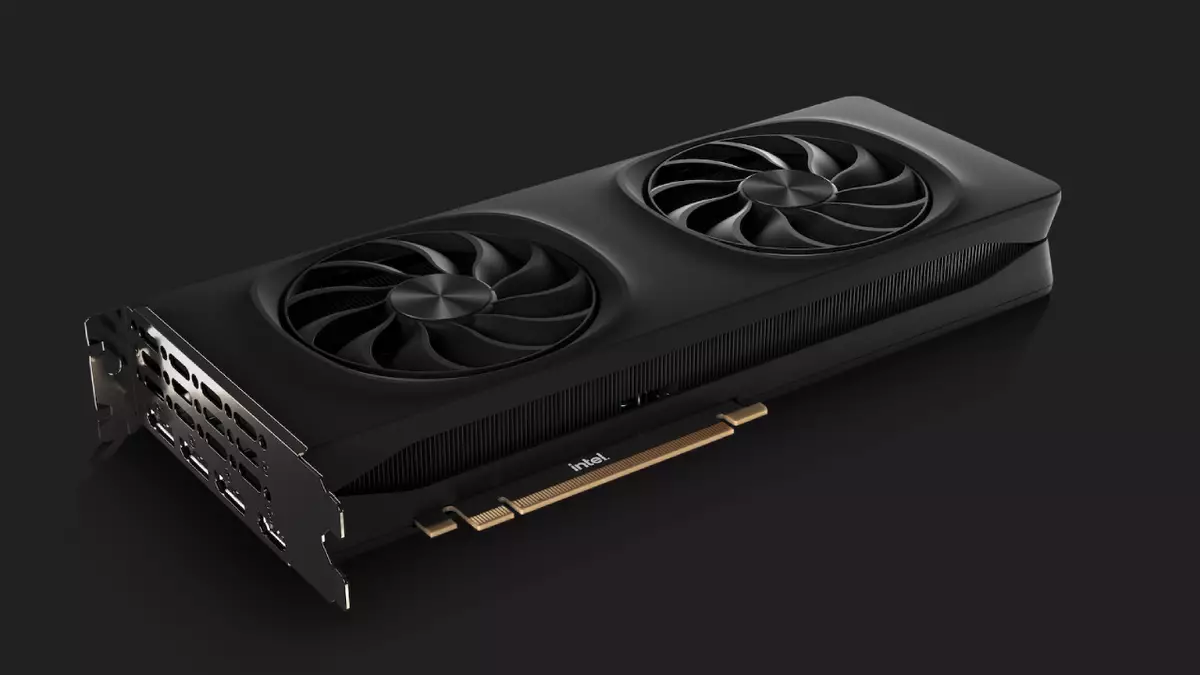In a landmark announcement, Intel has officially launched its second generation of gaming GPUs under the codename Battlemage, featuring the Arc B580 and B570 models. This release is significant not only for Intel, as it continues to penetrate a market long dominated by Nvidia and AMD, but also for gamers seeking better performance and features at competitive price points. Despite the excitement, early reactions reveal a tinge of disappointment; the new Battlemage lineup is initially positioned to contend with Nvidia’s entry-level RTX 4060. However, when it comes to the technological advancements that Intel offers, Battlemage could reshape the graphics landscape.
One of the most compelling aspects of the Battlemage GPUs is the introduction of XeSS 2, a significant upgrade to Intel’s upscaling technology. A major highlight is the newly integrated frame generation capability, which positions XeSS 2 as a serious competitor to Nvidia’s renowned Deep Learning Super Sampling (DLSS). Intel appears to have innovated further than AMD’s offerings, as their GPUs utilize XMX cores—AI accelerators akin to Nvidia’s Tensor cores. This integration enables Intel to provide AI-enhanced upscaling, an area where AMD struggles, as its graphics cards currently lack comparable cores.
What’s particularly intriguing about Intel’s frame generation is its methodology, which adopts principles similar to those found in Nvidia’s DLSS algorithm. By leveraging motion vectors and depth information from previous frames, Intel synthesizes interim frames that can enhance FPS significantly. For instance, in demanding titles like F1 24 running at 1440p, the XeSS 2 upscaling in combination with frame generation reportedly elevates performance from 48 to an astounding 186 fps—an impressive 3.9x uplift. Even for high-quality settings, players can anticipate substantial improvements, which could redefine gaming experiences.
In addition to enhanced graphics performance, Intel introduces a feature called XeLL—short for low latency. This enhancement parallels Nvidia’s Reflex technology by claiming to reduce latency dramatically, particularly when operating near the 50 fps mark. Intel’s data suggests that using XeLL can decrease latency from 57 milliseconds to 32 milliseconds, a crucial improvement for competitive gamers who depend on instantaneous reactions. Furthermore, XeLL is designed to mitigate any latency introduced when utilizing frame generation, ensuring players don’t sacrifice responsiveness for graphical fidelity.
By offering the dual advantages of elevated performance through frame generation and reduced latency with XeLL, Intel aims to deliver a comprehensive gaming solution that capitalizes on both speed and visual excellence. This integrated feature set offers considerable appeal, especially to gamers accustomed to Nvidia’s sophisticated ecosystems but looking for alternatives as they navigate the evolving landscape of GPU technology.
On paper, Intel’s Battlemage series emerges as a package that competes favorably with Nvidia, while clearly outshining AMD’s current-generation GPUs, which lack AI-driven architecture. While the immediate focus is on entry-level competition, the question remains: how will these features translate in real-world gaming scenarios? The excitement surrounding Battlemage is palpable, yet concrete performance benchmarks, especially in relationship to Nvidia’s DLSS and AMD’s FidelityFX Super Resolution (FSR), remain awaited.
As gamers and tech enthusiasts remain skeptical, the performance claims need to be validated through rigorous testing to ascertain the real-world effectiveness of XeSS 2, including how the image quality holds up against competitors. Intel’s ambitions with its new GPU lineup could potentially lead to a seismic shift in the gaming industry, depending largely on whether they can deliver on the promises made.
Intel’s entrance into the second-generation GPU market heralds a critical moment not just for the company, but for gamers worldwide. With Battlemage, Intel seems to be setting the stage for a new era of competitive graphics performance, challenging not only Nvidia but also advocating a clearer edge over AMD in features like AI-powered upscaling and latency reduction. The real test of Intel’s latest technology is just around the corner, and it will be fascinating to see if Battlemage can indeed substantiate its bold claims, thereby carving out a significant niche within the high-stakes gaming GPU market.


Leave a Reply